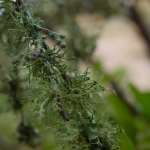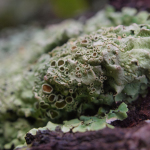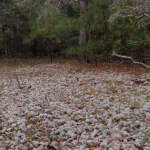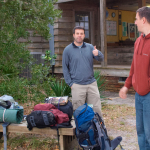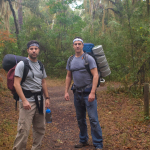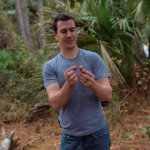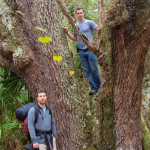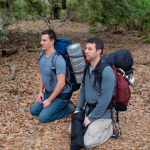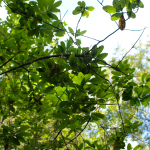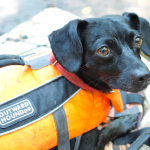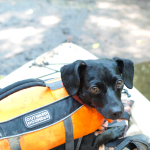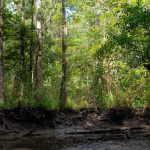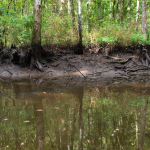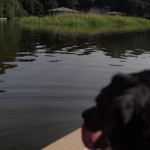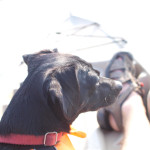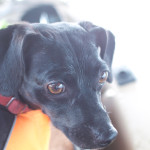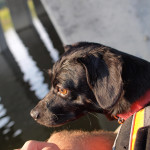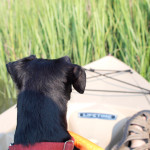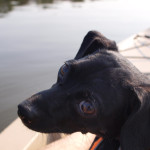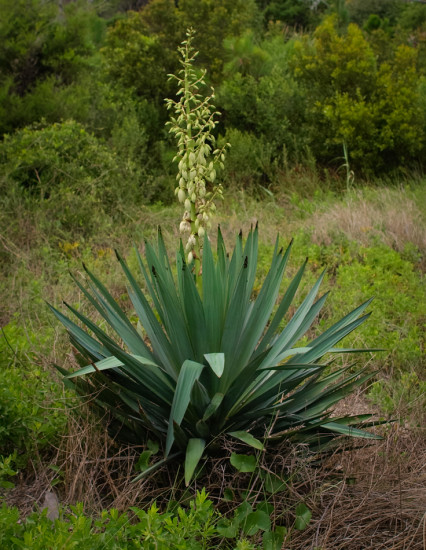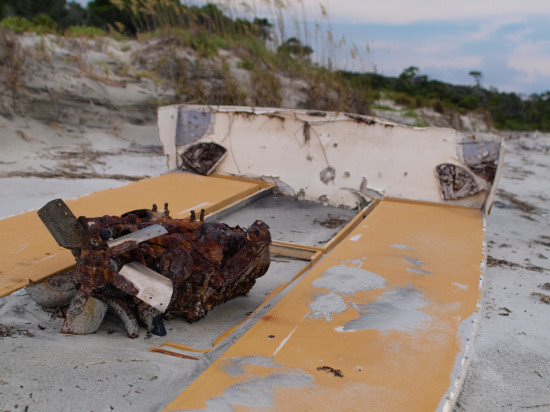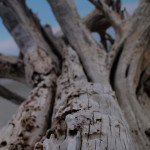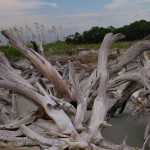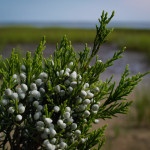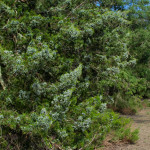From crustose to fruticose, Cumberland Island is rich with lichens, many of which seemed to be forming fruiting bodies in abundance. Some of the round, egg-like lichens that dwell on the ground’s surface covered a light gap, similar to those I photographed at the Ogeechee Canal. While not pictured, there were also red lichens covering spots of Live Oak bark.
Tag Archives: Georgia
An overnight at Cumberland Island
The weekend before Thanksgiving, Sean, John, and I visited Cumberland Island National Seashore for an overnight trip. The island is accessible via ferry and has several areas to camp, including some that are ‘primitive’ – that is, without water or a restroom.
We hiked in about 7 miles and stayed at the aptly named campsite, Yankee’s Paradise.
Kayaking the Ogeechee
Images from a small tributary I kayaked through on the Ogeechee River. Living in Savannah, I have typically set out in salt water, and it was a different experience in a freshwater system: new plants, clear, tannin-rich water, but still very muddy.
The point I set out from is still tidally influenced, but I don’t believe the salinity of the water is high, considering the volume of freshwater flowing seaward. When I started, the tide was near its lowest point, and you can see the line of mud up the stems in two of the photographs. As I left, the tide was rushing in-land briskly, so it took over 1.5 times as long to get back to the dock than it did to kayak to the farthest point. In fact, when I finally did make it back, the tide was near its highest point; the water lapped at lawn grass of a riverside home.
Amos goes kayaking too
A bromeliad on a sand dune?
Boat decay
Exploring Little Tybee
After enduring the wet kayak ride, Eva was happy to play in the sand.
Little Tybee Island Driftwood
A “fruiting” juniper
Given that the Red Cedar Juniperus virginiana is a gynmosperm, the juniper’s berries are distinct phylogenetically and developmentally from what we commonly call fruits, including true berries.
Golden Silk Orb-weaver
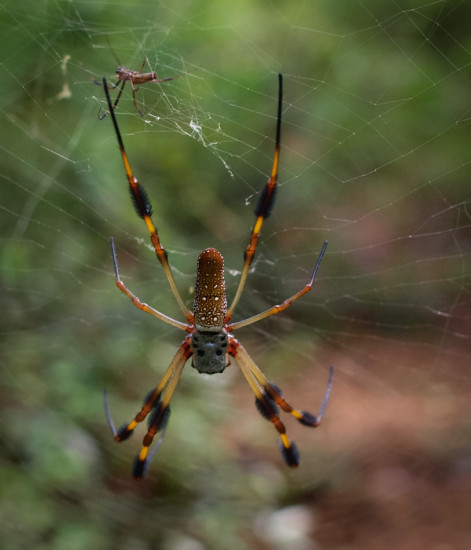 Literally ran into a few of these recently… here’s a large (probably about four inches or the size of your hand’s palm) female Nephila sp. (I’m guessing N. clavipes from Google searches of nearby orbweavers) and one of her hopeful mates. I counted three males associated with this web, and Wikipedia claims that these spiders are often parasitized by kleptoparastic Argyrodes spiders that steal captured prey from her web.
Literally ran into a few of these recently… here’s a large (probably about four inches or the size of your hand’s palm) female Nephila sp. (I’m guessing N. clavipes from Google searches of nearby orbweavers) and one of her hopeful mates. I counted three males associated with this web, and Wikipedia claims that these spiders are often parasitized by kleptoparastic Argyrodes spiders that steal captured prey from her web.

